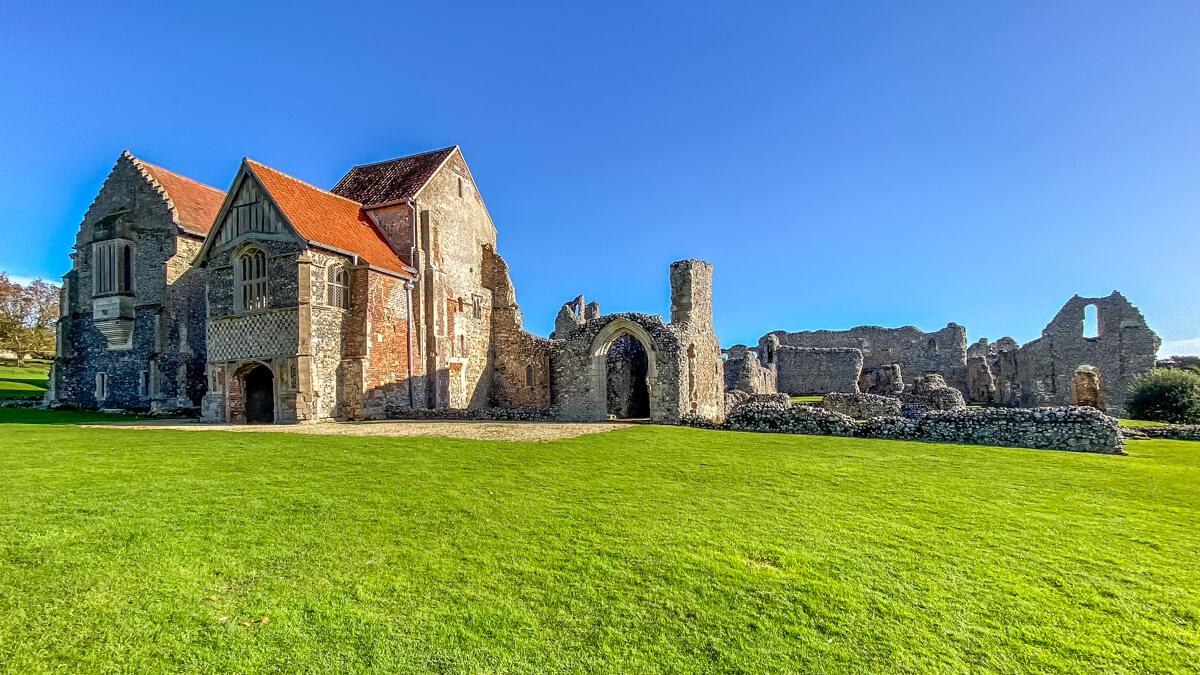English Heritage owns and manages some of the most significant historic places in England. Norfolk is fortunate to have 20 of these properties within its borders. Let me tell you more about the English Heritage sites in Norfolk so you can decide which ones to visit.
Be sure to join our email newsletter here to keep up to date with what’s happening in Norfolk.
Note: This post contains affiliate links. As an Amazon Associate, we earn from qualifying purchases. Please see disclosure for more information.
About English Heritage
English Heritage is a charity that cares for over 400 historic buildings, monuments and sites. Each year 10 million people visit their properties which include world-famous prehistoric sites, palaces, houses, hill figures, castles, abbeys, industrial sites, Roman forts and even deserted medieval villages and a cold war bunker.
They have a membership program which includes free entry to all their sites along with other benefits. Get more information about English Heritage membership here. Now (until 7 April 2024) you can get 20% off gift and annual direct debit memberships by using the discount code EAST20EHM.
How many English Heritage Sites are there in Norfolk?
There are 20 English Heritage sites in Norfolk. Of these, 16 are free to visit and four charge admission.
Free English Heritage Sites in Norfolk
Fortunately many of the Norfolk English Heritage sites are free to visit. In some cases, you may need to pay for parking if you are not an English Heritage member.
Don’t write off these places because there is no admission charge. They are all still worth visiting.
*If you are looking for more budget-friendly ideas, check out our list of free things to do in Norfolk.
Burgh Castle
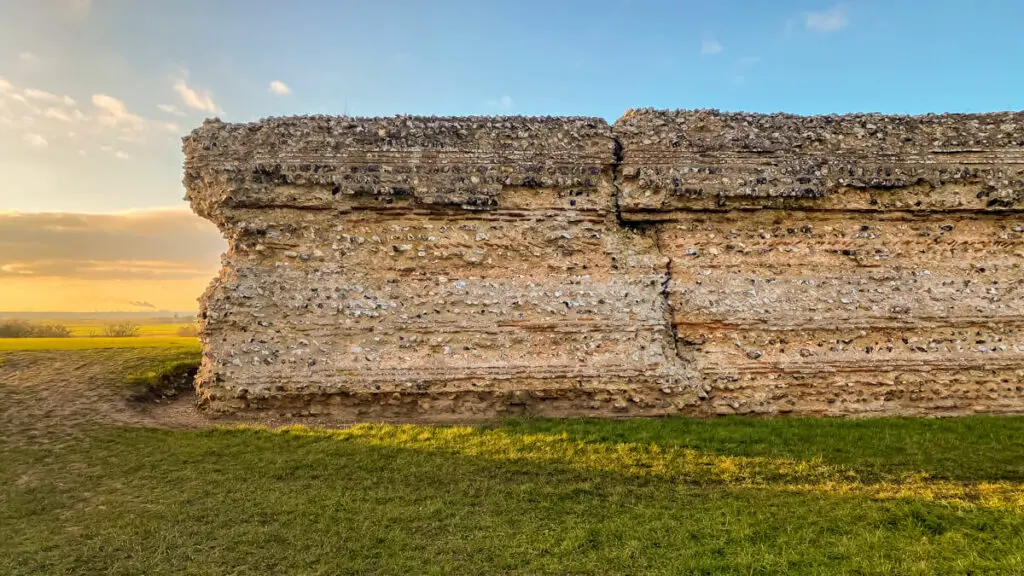
Most of what remains today is the ruins of the Roman fort that was built in the late 3rd century. Three of its four walls still stand. Long ago, the west wall fell into the marshes giving the fort the panoramic view across Breydon Water.
Burgh Castle has been the site of a Roman fort, Norman Castle, and possibly an early Christian monastery. It is the best preserved Roman monument in East Anglia and one of the most impressive Roman buildings in Britain.
From the car park, you can do the one-mile circular walk which will take you to see the ruins and offers some scenic views over Halvergate Marshes and Breydon Water. Berney Arms Mill, the tallest drainage mill in the country, can also be seen in the distance. Learn more in our Burgh Castle circular walk guide.
The site is open all reasonable daylight hours. Note that Burgh Castle implemented a parking charge in June 2022 for all visitors.
Learn more about visiting here.
*If you enjoyed Burgh Castle, you should also check out Venta Icenorum, another Roman site.
Binham Priory
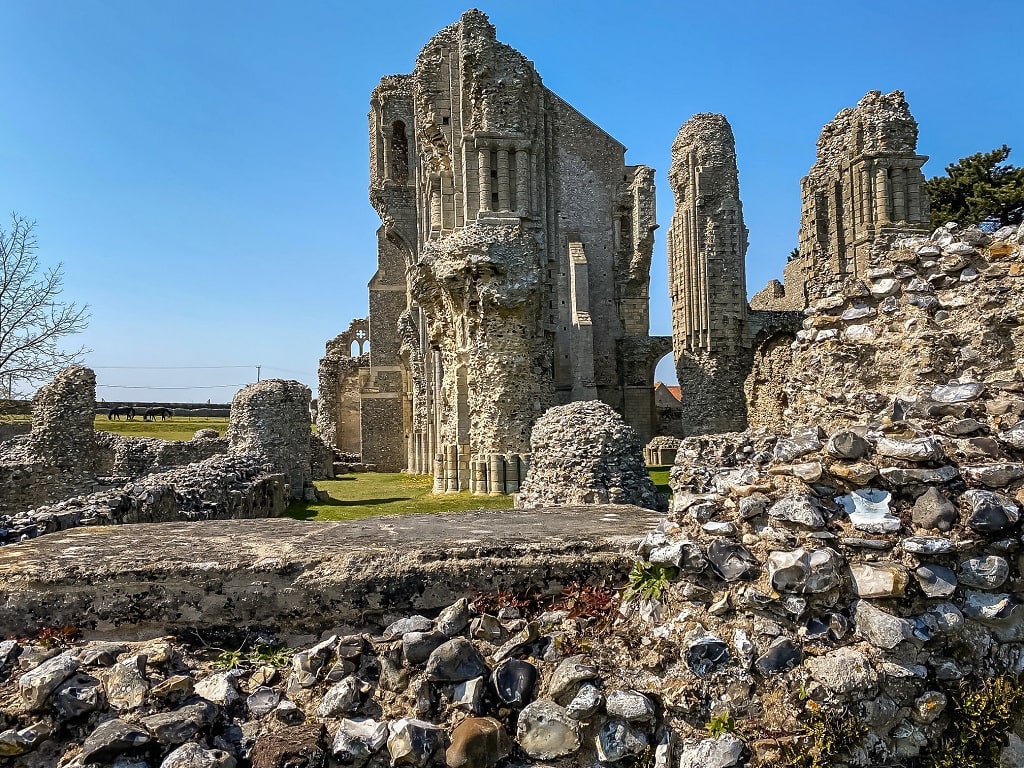
Binham Priory has been a continuous place of worship for more than 800 years. It may have been closed and partially dismantled during the dissolution of the monasteries, but the nave continued on as the Binham parish church.
You’ll want to explore the ruins of the priory and go inside the parish church. It’s also a lovely spot for a picnic.
Learn more about visiting here.
Castle Acre Castle and Bailey Gate

Castle Acre Castle was founded soon after the Battle of Hastings by the first William de Warenne, a close associate of William the Conqueror. It is a superb and well-preserved example of a motte-and-bailey castle, and remains one of the most impressive Norman earthworks in the country.
It’s fun to explore the ruins of Castle Acre. There are bridges to make it easier to cross the ditches and stairs to help you reach the inner bailey. The views over the countryside will be worth the climb.
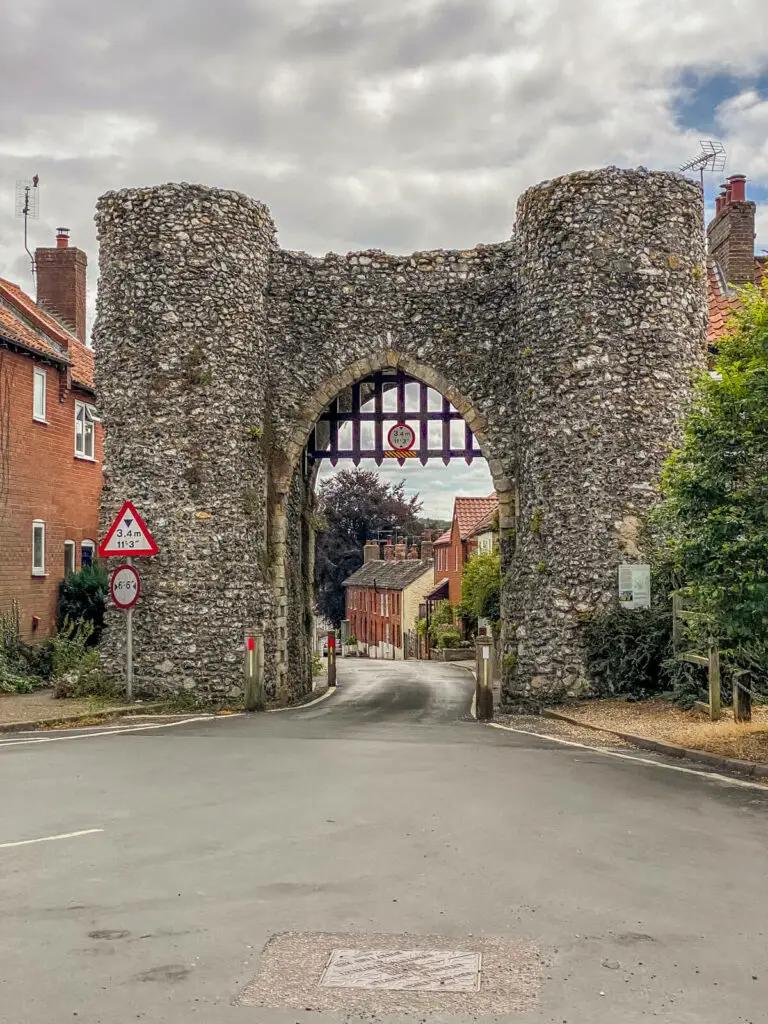
Just a short walk from Castle Acre Castle, you can see the Bailey Gate, which is one of two stone gatehouses added to the settlement’s massive earthwork defences around 1200. The main road into the village still runs between its towers.
If you want to also see Castle Acre Priory (more on that below), you might want to do the 6-mile long Castle Acre circular walk. You can get detailed directions here.
Learn more about visiting here.
Thetford Priory
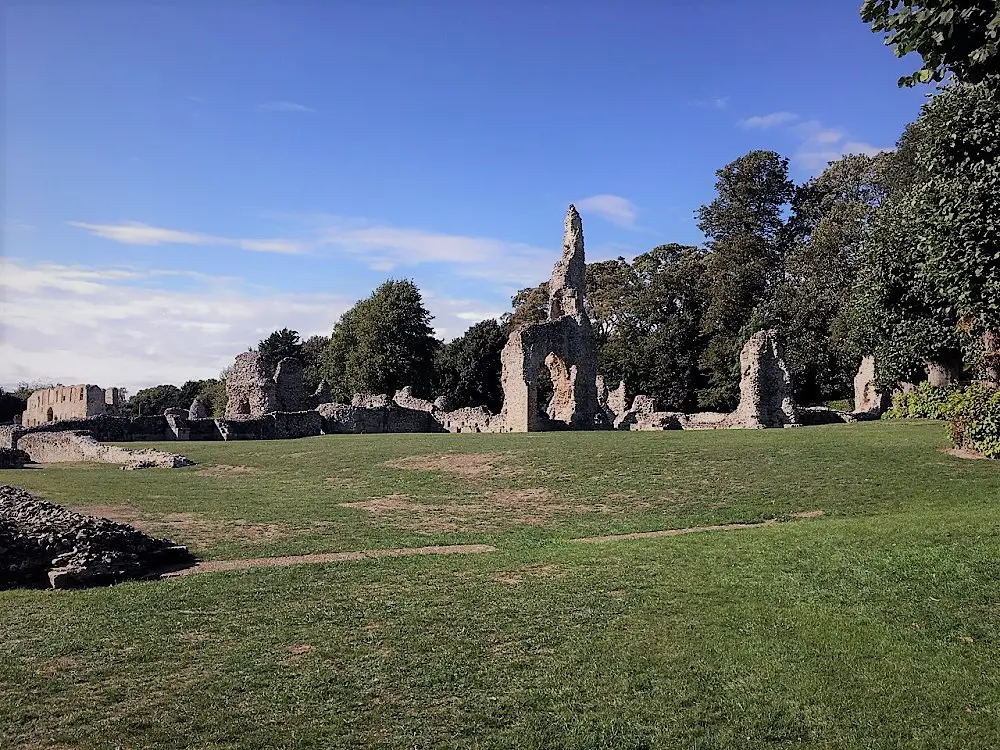
During Medieval times, the Priory of Our Lady of Thetford was one of the largest and most important monasteries in East Anglia. Today, you can visit the ruins which include the lower walls of the church and cloister, the shell of the prior’s lodging, and an almost complete 14th century gatehouse still stand.
Thetford Priory was founded in the early 12th century and for 400 years it was the burial place of the Earls and Dukes of Norfolk. It was one of the last monasteries to be suppressed when it surrendered to Henry VIII’s commissioners in 1540.
You can find the priory on the edge of the Thetford town centre. It’s one of the most haunted places in Norfolk as there have been several sightings of ghostly monks at the priory.
Learn more about visiting here.
Baconsthorpe Castle
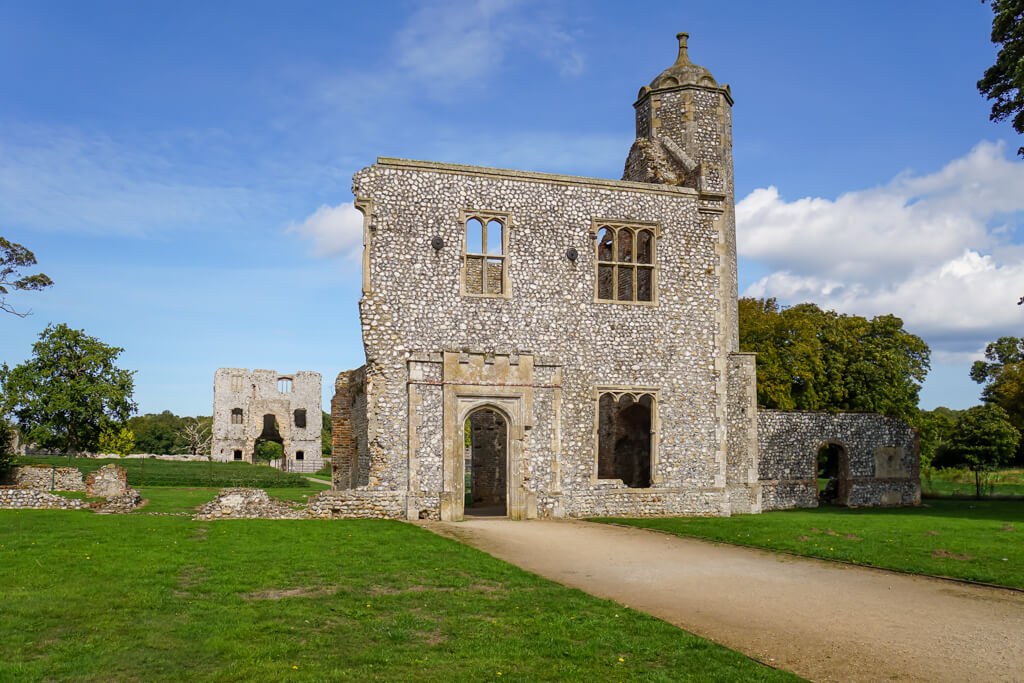
A few miles from the town of Holt, you will find the ruins of Baconsthorpe Castle, the moated and fortified 15th century manor house where the Heydon family once lived. Over 200 years, this ambitious family built, then enlarged, and finally abandoned this castle.
It’s open any reasonable time during daylight hours. Pack a picnic as there are no facilities but plenty of space for kids to run around. There is a small fee (£2) to use the car park if you are not an English Heritage member.
Learn more about visiting here.
North Elmham Chapel
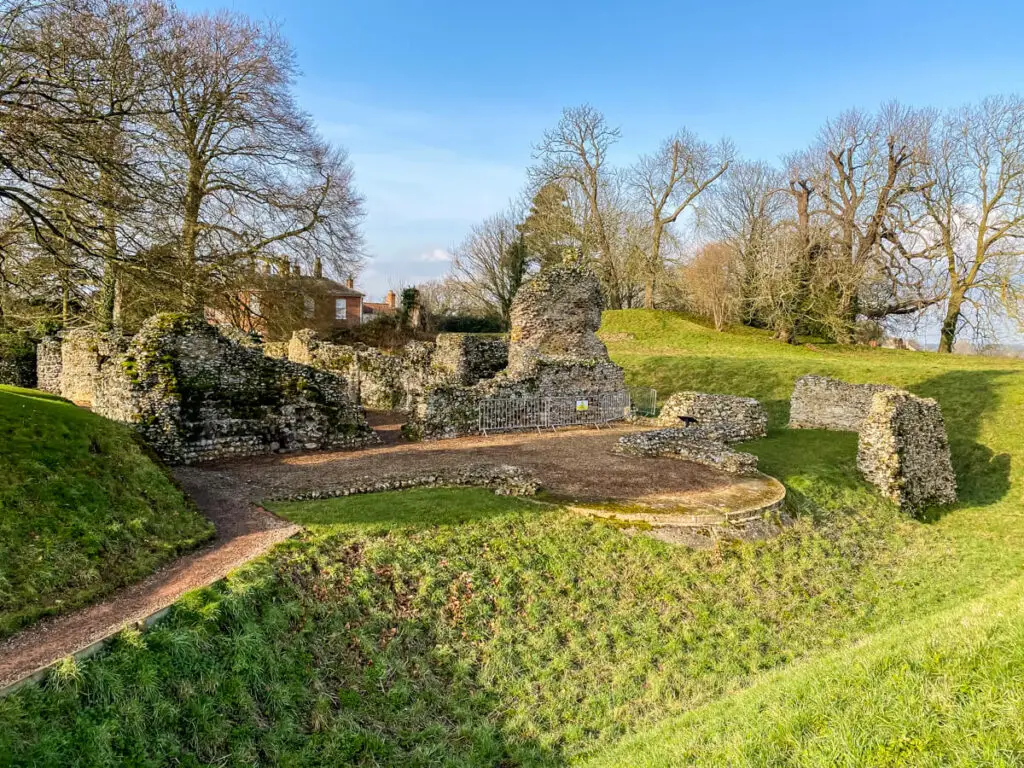
North Elmham Chapel is not your typical church ruins. It was a small uniquely-designed Norman chapel that was converted into a small castle. In addition to the ruins, you can still see the defensive banks and moats that surround the site.
The Norman chapel was built on the site of an earlier timber church which is thought to be the Saxon cathedral of East Anglia. Henry Despenser, the unpopular Bishop of Norwich, who brutally suppressed the Peasants’ Revolt of 1381, converted the chapel into a fortified manor house.
Unfortunately, there are a few areas of the chapel that are fenced off because they are at risk of collapsing. Please do not try to access these areas.
It’s open any reasonable daylight hours. There is a small free car park right by the entrance.
Learn more about visiting here.
Weeting Castle
Weeting Castle was a manor house built around 1180 by Hugh de Plais that may have been designed to resemble the hall at Castle Acre Castle, which was owned by Hugh’s feudal lord, Hamelin de Warenne.
It had a three-storey tower, a great hall, and a service block, with a separate kitchen positioned near the house, but after the 14th century it was no longer used and fell into decay.
The house was never fortified. In the 13th century a decorative moat was added which now fills with water in winter and dries out over the summer.
In the late 18th century, the ruins of Weeting Castle became an ornamental feature in the grounds of nearby Weeting Hall. The government acquired the estate including the ruins in the early 20th century.
When you go to Weeting Castle you can park in the small lay-by next to the castle entrance, just in front of the village church. Learn more about visiting here.
*Please be aware that some areas of Weeting Castle are currently scaffolded and so is not looking its best.
Church of the Holy Sepulchre near Thetford
Note:The Church of the Holy Sepulchre is currently closed to visitors pending a conservation project.
The Grade I listed Church of the Holy Sepulchre was a medieval monastic house. It is the only surviving remains in England of a priory of canons of the Holy Sepulchre, who aided pilgrims to Christ’s tomb. The ruined nave of their 14th or 15th-century church was later used as a barn.
Learn more about visiting here.
Thetford Warren Lodge
Thetford Warren Lodge was built by the Prior of Thetford around 1400 to protect gamekeepers and hunting parties against armed poachers. Much later the local warreners used it to harvest rabbits.
While you can’t go inside the Warren Lodge building, you can visit the site during any reasonable daylight hours. It is possible to see the ground floor interior through a grille in the doorway.
There is a small car park on the track that leads to the site.
Learn more about visiting here.
Cow Tower in Norwich

On the banks of the River Wensum stands one of the earliest purpose-built artillery blockhouses in England. Cow Tower is over 15 metres tall to make it possible to overlook the high ground across the river.
It was built in around 1400 to command a strategic point in Norwich’s city defence. The name is believed to come from the surrounding meadow, previously known as Cowholme.
The tower was intended to house guns and a garrison of gunners. The ground floor may have been a communal dining room and the gunners would have slept on the upper two levels.
You can see Cow Tower as it is right by Riverside Walk path and peek inside, but the interior is not open to visitors.
Learn more about visiting here.
Binham Market Cross
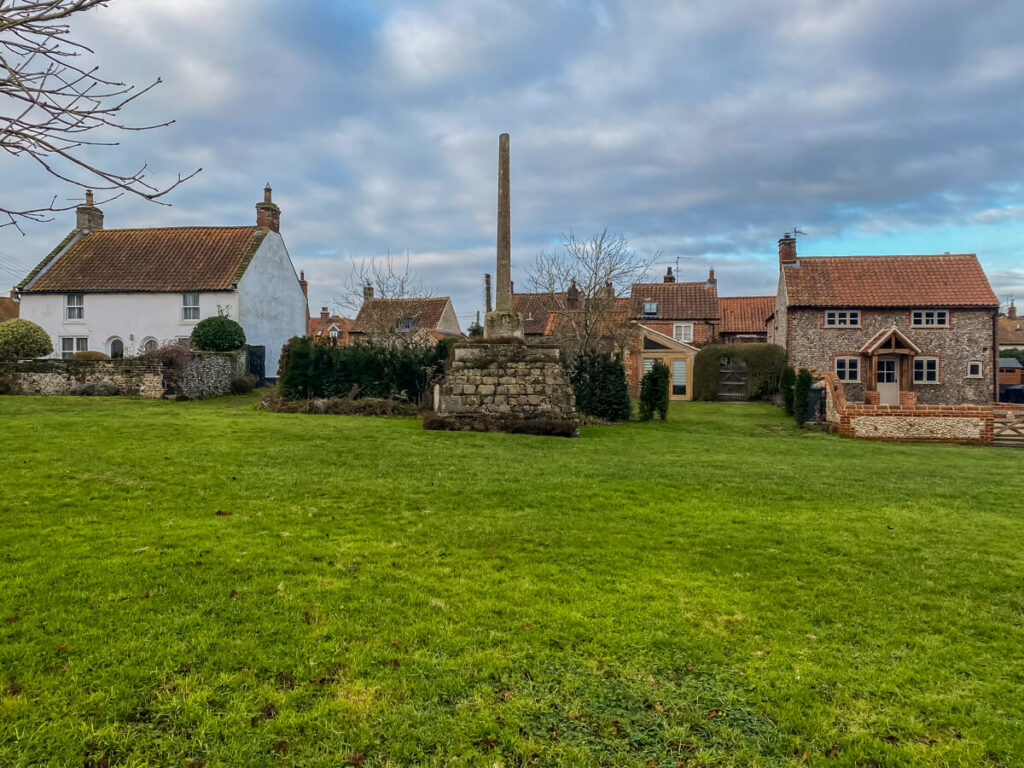
Binham Market Cross is one of the best surviving examples of a medieval standing cross in Norfolk. It stands on the green in the centre of the village, not far from Binham Priory.
The 15th-century cross is built of Barnack limestone and stands on a two metre tall base. You can see the weathered remains of an ornamental moulding partway up the shaft, but the stone cross that originally topped the shaft is missing.
Learn more about visiting here.
Creake Abbey
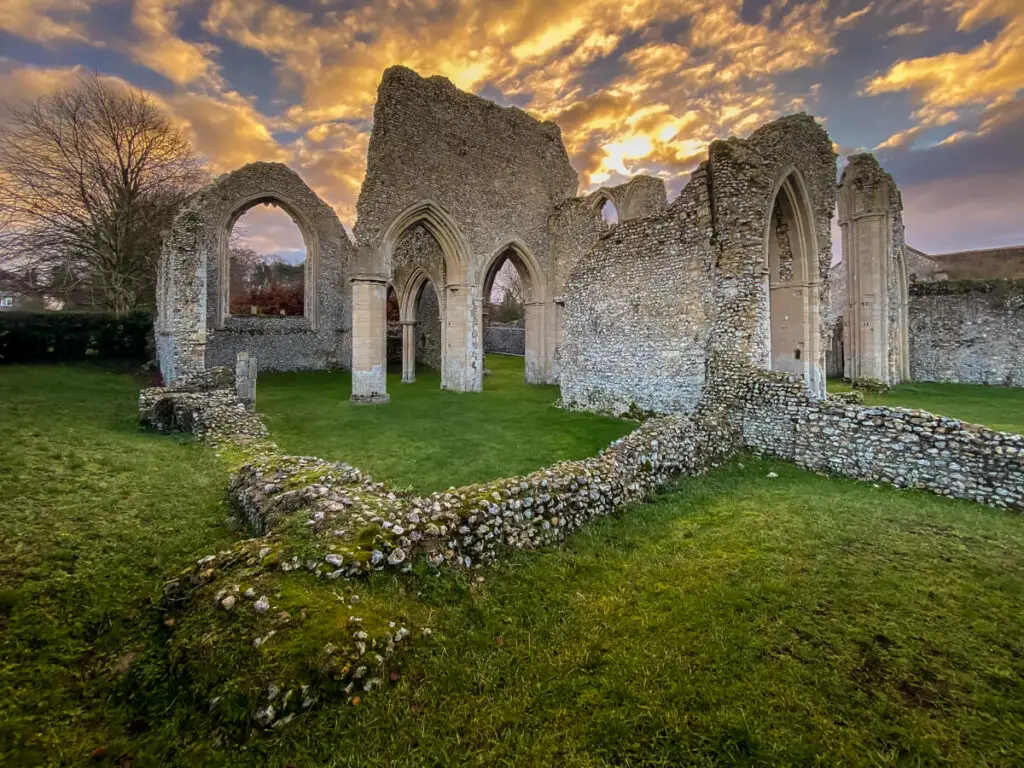
Creake Abbey is a ruined Augustinian abbey located by the River Burn, a mile to the north of the village of North Creake. It dates from the 13th century with the abbey church being dedicated to Saint Mary.
After a devastating fire in the 15th-century, the abbey was drastically reduced in size, with arches and windows blocked. The abbey was also hit by the plague. The last abbot died alone, and in 1506 the abbey closed.
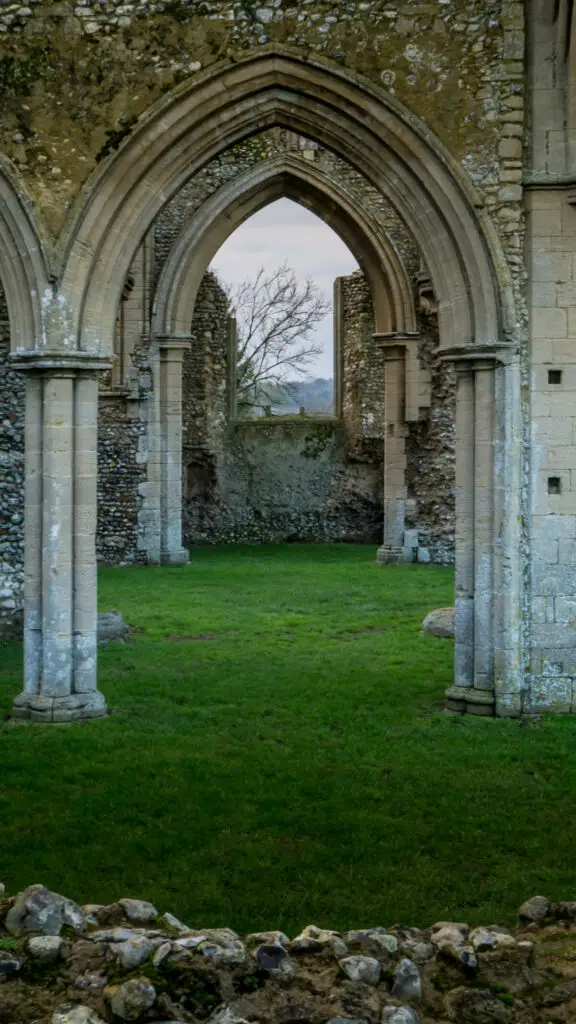
The entrance to Creake Abbey is signposted from the B1355. After turning off the main road you should take the road on the left at the fork ‘Abbey Ruins’. There is room for a few cars to park in the grass area by the ruins.
The site is not large, but the ruins that are left are substantial. You can walk around it in a few minutes or alternatively, relax and have picnic in the grassy area that was once the nave.
While there aren’t any facilities at the abbey, it is next to a courtyard with a café and food hall, and boutique shops, studios and accessible toilets. The courtyard and adjacent barn also host an award-winning farmers’ market on the first Saturday of each month along with a popular Christmas market.

You can reach the courtyard via the right fork on the main drive, signposted ‘Shops & Café’. There is more parking here too.
Learn more about visiting here.
Blakeney Guildhall
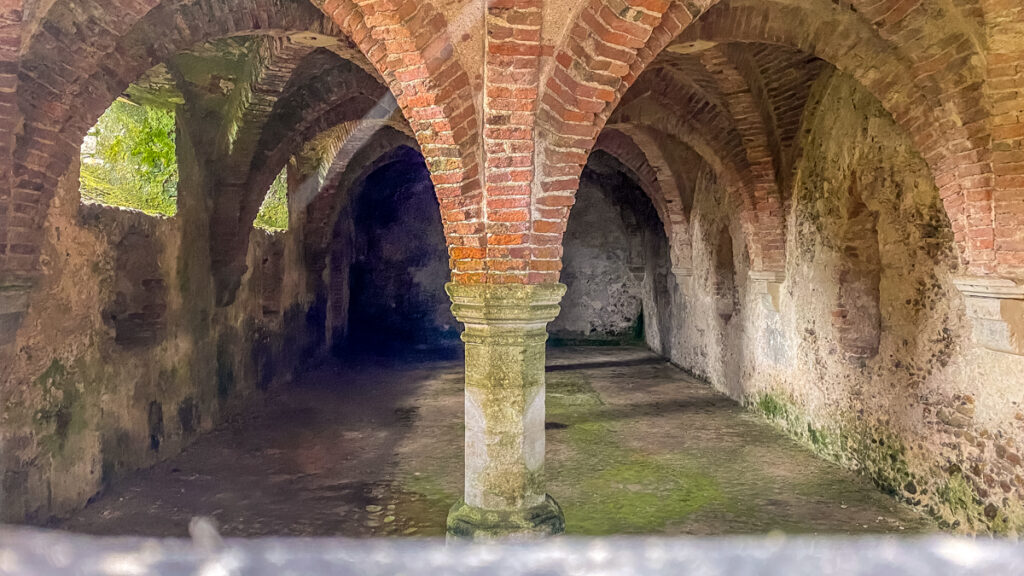
The remains of the merchant house of a prosperous, with a fine 15th century brick-vaulted undercroft, became the guildhall for Blakeney’s fish merchants.
The site is open during any reasonable daylight hours. While you can’t go inside the Guildhall (as of August 2022), you can view it through a grille in the door or through the windows.
There is limited on-street parking in High Street in Blakeney. Alternatively, you can use the pay and display car park opposite the pedestrian access path to the Guildhall off The Quay which is owned by the National Trust. If you are a National Trust member, you can park there for free.
Learn more about visiting here.
St. Olave’s Priory
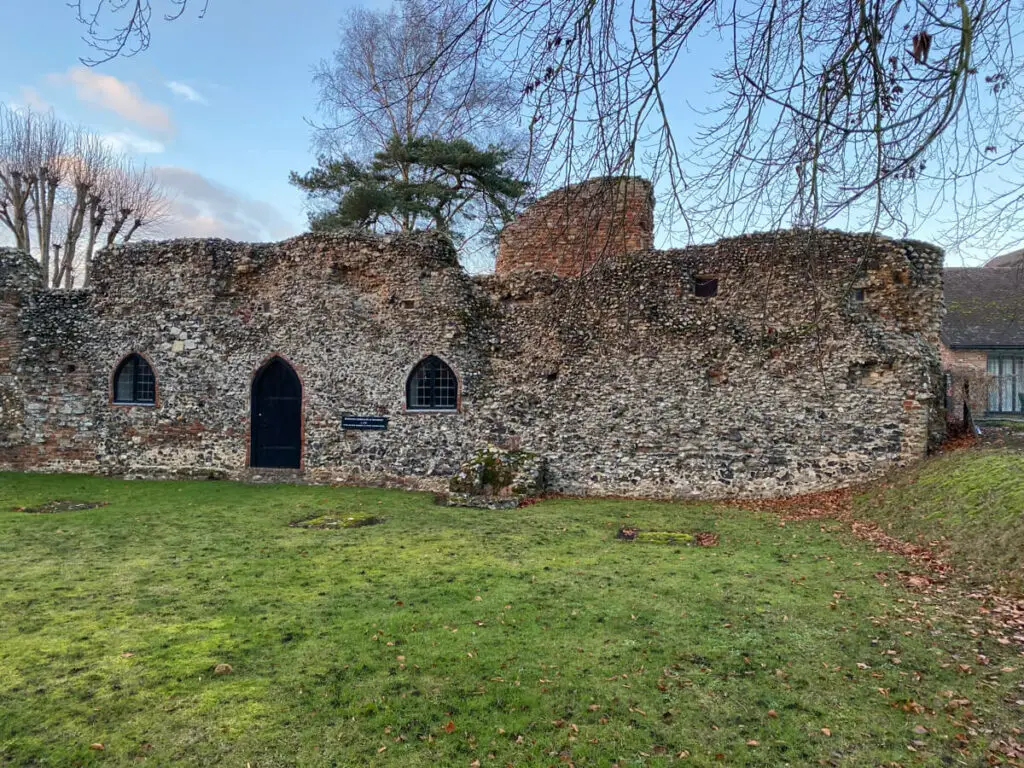
The now ruined St Olave’s Priory near Great Yarmouth was founded by Roger Fitz Osbert around 1216 and named after the patron saint of Norway. This Augustinian priory was dissolved by Henry VII in 1537 and then purchased by Sir Henry Jerringham who built a three storey mansion just north of cloisters which incorporated monastic remains.
Today, you can still see part of the church, cloister, and refectory undercroft. A bit north, you may be able to see some remains from Jerringham’s house.
The site does not have a car park. Visitors can use the left-hand side of the car park at the neighbouring Priory Farm Restaurant then it’s a short walk to the ruins.
Learn more about visiting here.
Berney Arms Windmill
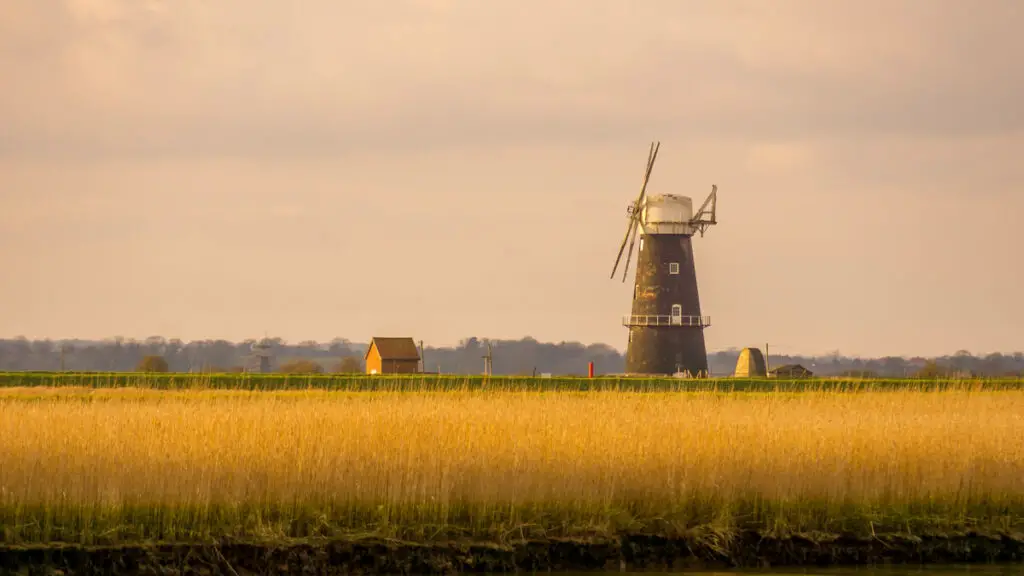
Note: Berney Arms Windmill is currently closed to visitors pending a major restoration project.
One of Norfolk’s best and largest extant marsh mills, Berney Arms was built to grind a constituent of cement and in use until 1951, for subsequently pumping water to drain surrounding marshland. It stands over 21 metres tall.
Given the remote location, the mill is not easily accessible by car. You can walk to it from the village of Halvergate (3.7 miles via public footpath) or Great Yarmouth (5 miles via Wherryman Way). It is also visible from the Burgh Castle circular walk.
Alternatively, you could take the train to Berney Arms station, which is a request stop on the Norwich-Great Yarmouth rail line. The train station has no facilities or shelter but it is only a 1/4 mile walk from the mill.
Learn more about visiting here.
Caister Roman Fort
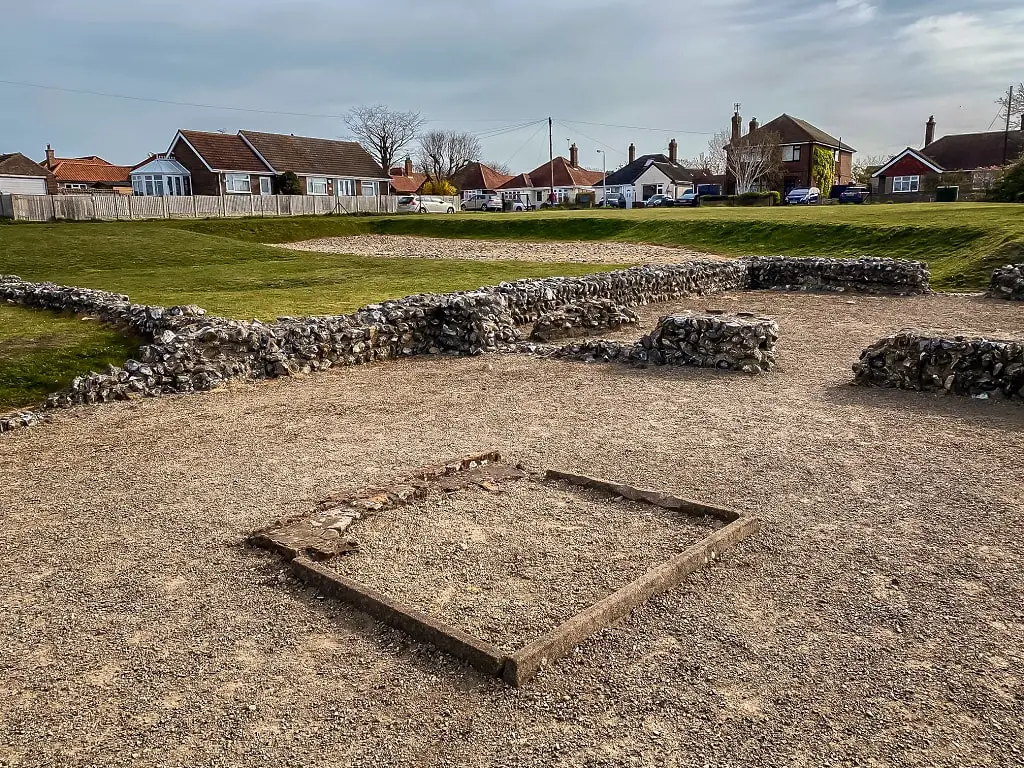
The Caister-on-Sea Roman Fort was built around 200 AD as a base for the Roman army and navy. It was part of a chain of coastal forts along what the Romans called as the ‘Saxon Shore’ that covered the coast from the Wash around to the east and down to the south.
The Caister site was occupied until the end of the 4th century, when the Romans left Britain, but was not discovered until excavations in 1951. Unfortunately, only a small portion of the Caister Fort is visible today, but it still gives you an idea of what the site would have been like in Roman times.
Learn more about visiting here.
Top English Heritage Sites in Norfolk
The most popular English Heritage sites in Norfolk do charge an admission, but they are all free if you are an English Heritage member. Get more information about membership here.
Great Yarmouth Row Houses & Greyfriars Cloisters
Note: Great Yarmouth Row House and Greyfriairs Cloisters are currently closed for essential conservation works.
The Row Houses at Row 111 and the Old Merchant’s House are some of the few that survived the bombing during World War II and post war clearances.
These properties show what these characteristic houses would have looked like at various stages in their history and have a wonderful collection of fixtures and fittings – including painted panels, elaborate wall-ties and door-knockers – rescued from other now-demolished row dwellings.
Nearby you will find Greyfriars’ Cloisters, the remains of the 13th-century friary of Franciscan ‘grey friars’, that was later converted into Row dwellings. The wartime bombings have revealed some of their interior features on the walls of the cloister and church.
For non-members, the charge is £6.00 for adults and £3.60 for kids (aged 4-17).
Learn more about visiting here.
Castle Acre Priory
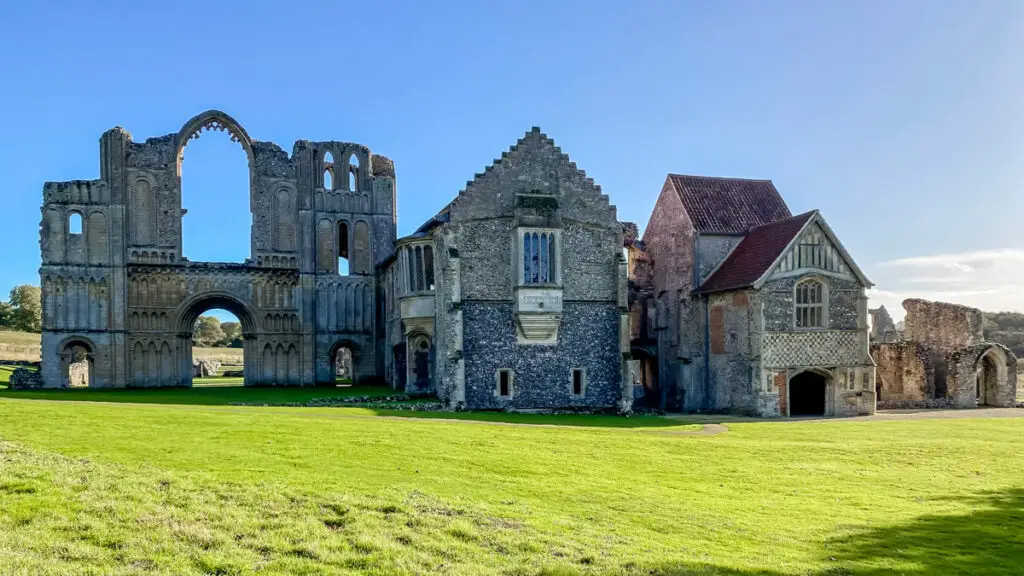
Just a short walk from Castle Acre Castle and the Bailey Gate you will find one of the best preserved monastic sites in the country, Castle Acre Priory. It was founded in 1090 by the son of William de Warenne, a Norman knight that fought in the Battle of Hastings and inspired by the monastery in Cluny, France.

The visitors centre has an exhibition where you can learn more about Castle Acre Priory before you make the short walk to the ruins. Also, don’t forget to grab your audio guide.
You will be impressed by the dramatic west front that was designed to emphasise the importance of the priory. There is a lot to see as you explore the ruins including the nave, cloisters, monk’s dormitory, and more. Upstairs, the prior’s lodging and chapel are still largely intact.
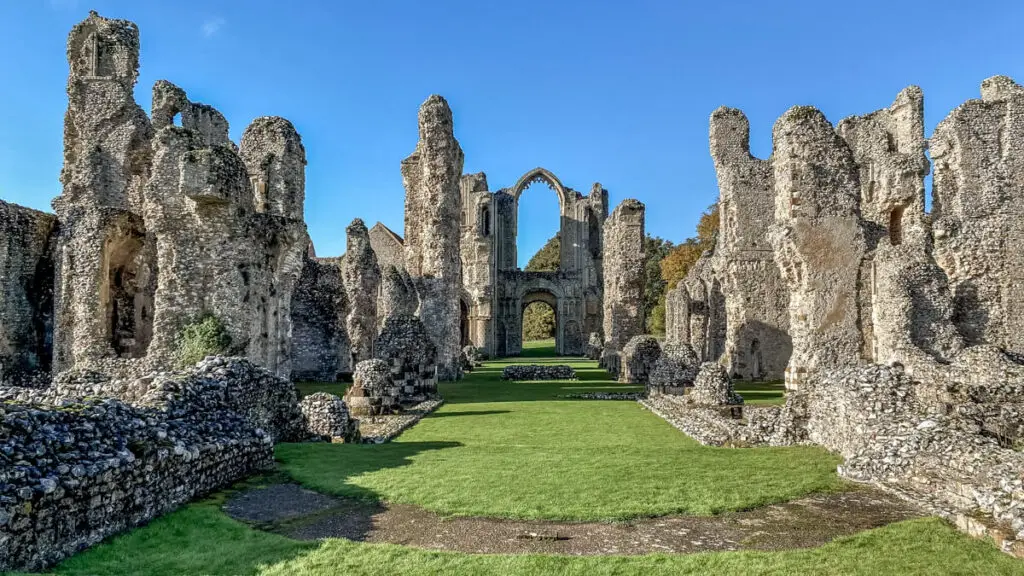
For non-members, admission is £8.10 for adults and £4.80 for kids (aged 4-17). It’s also an ideal spot for a picnic as there are several tables close to the ruins.
Learn more about visiting here.
Grime’s Graves
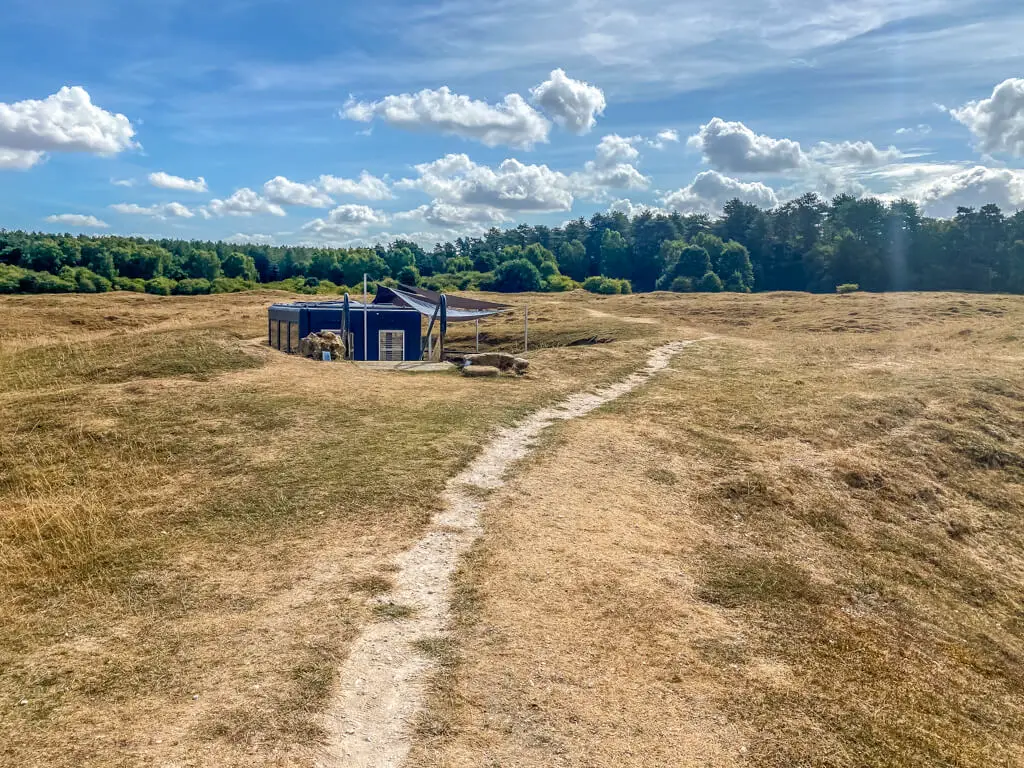
Despite the name Grime’s Graves does not have anything to do with death. It is the only Neolithic flint mine open to visitors in Britain. It was first named Grim’s Graves by the Anglo-Saxons and is also a Site of Special Scientific Interest as it is a habitat for rare plants and fauna.
While the flint mines were dug over 5,000 years ago, they were not identified until an excavation in 1870. The site contains around 400 pits.
You can climb nine metres down stairs into one of the excavated shafts to see where they would have mined the jet-black flint. There is also a small exhibition at the Visitor’s Centre that tells more about the history of the site.
Please note that children under 7 years of age are not allowed into the mine shaft and everyone needs to wear sensible flat shoes.
For non-members, the charge is £6.90 for adults and £4.10 for kids (aged 4-17). The site is only open from April to October.
Learn more about visiting here.
Castle Rising
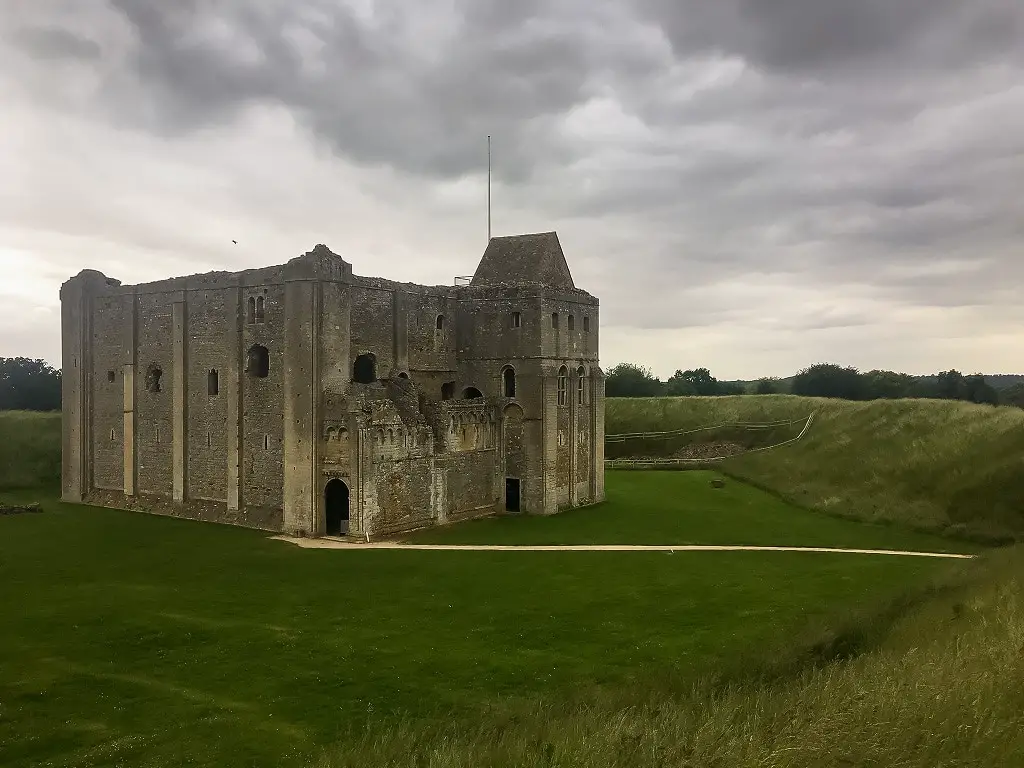
Castle Rising Castle is one of the most famous 12th-century castles in England because the stone keep is mostly intact and it is surrounded by 20 acres of massive earthworks. It is also haunted by Queen Isabella aka the She-Wolf of France, who once called Castle Rising home.
While the castle was built in the 12th century by the Norman lord William d’Albini for his new wife, the widow of Henry I, it is best known as the residence of Queen Isabella. The widow (and alleged murderess) of Edward II and mother of Edward III lived at Castle Rising during the 14th century and was said to have suffered bouts of madness (possibly dementia).
When you visit Castle Rising, you can see the scale of the earthworks and appreciate the elaborate decoration on the outside of the keep. Inside the ruins, you can explore the Great Hall and Queen Isabella’s apartments. Also, be sure to check out the remains of an early Norman Church that predates the castle.
For non-members, the charge is £5.00 for adults and £3.50 for kids (aged 4-17). Opening hours vary by season. During the summer it is open daily, but during the winter it is only open on select days. Check here to confirm before you visit.
The Castle hosts some special events throughout the year that kids will love like displays of Medieval swordsmanship, archery, and more.
Learn more about visiting here.
Are Norfolk English Heritage sites good for kids?
Yes. All the places on this list are family-friendly. I think the best English Heritage sites for kids are the castles as there is room to run around and explore the ruins.
Is English Heritage Membership in Norfolk Worth It?
English Heritage is a national membership programme so in addition to the benefit of being able to visit the sites in Norfolk, you can also see many more across the country for free. If you plan on going to some of their high ticket properties like Stonehenge or Dover Castle (in addition to some of the sites in Norfolk), it’s not difficult to recoup the annual membership fee.
Additionally, you can feel good that your money is going towards the care of these precious sites.
Sign up for English Heritage membership here.
Disclosure: This post contains affiliate links. This means we will receive a small commission for some purchases made using links in our blog with no additional cost to you. Please be assured we would not promote any product unless we believe that our readers will also benefit. The commission does not influence the editorial content of this site.

